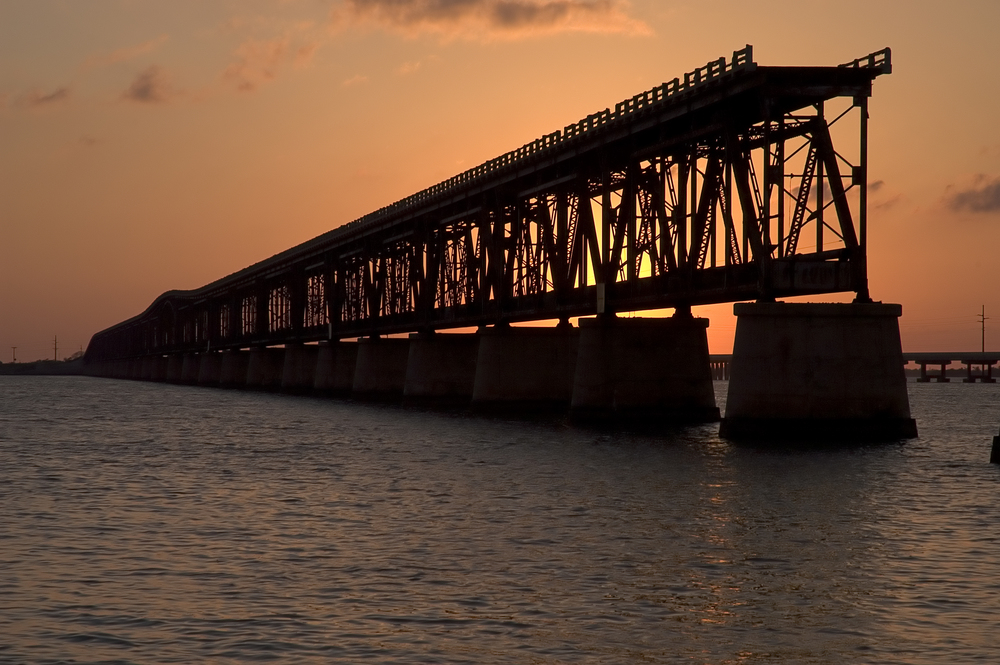
ShutterstockNatural gas just doesn’t quite get us there.
Boosters of natural gas frequently argue that it can serve as a “bridge fuel,” spanning the chasm between our current global electricity systems, dominated by coal, and systems mostly or completely comprised of low-carbon sources like wind and solar. The idea is, we ramp up natural gas, the least dirty of the fossil fuels, to displace coal, thereby giving ourselves a few more decades to develop renewable energy, which will then replace natural gas. Natgas gets us from here to there.
This argument has become popular for a broad swath of U.S. elites, not only typical fossil-fuel boosters but lefty luminaries like Center for American Progress founder John Podesta and green leaders like Environmental Defense Fund President Fred Krupp.
Despite the notion becoming common to the point of cliché, however, there’s been almost no effort to model a natural gas bridge — that is to say, to construct a climate scenario that a) stabilizes atmospheric carbon dioxide at a safe level and b) includes a large-but-temporary increase in natural gas consumption. There have been climate scenarios that incorporate a baseline level of natural gas consumption (assuming no significant policy shifts), and some that model consumption substantially and permanently increasing, but none that explicitly model a bridge, that is, a rise and subsequent decline.
Into the breach steps Michael Levi of the Council on Foreign Relations, with a new paper, “Climate consequences of natural gas as a bridge fuel,” published in the journal Climatic Change. It’s a fascinating and timely bit of work that takes as its goal “to explore the properties of scenarios that feature natural gas as a bridge and that stabilize CO2 concentrations at or near the oft discussed targets of 450 and 550 ppm.”
The paper’s got some intriguing things to say about methane emissions from natural gas production, which is a hot topic right now. (Long story short, the paper claims that methane emissions don’t have much bearing on long-term climate outcomes.) But I hope that doesn’t distract from the more central conclusion, which is that true climate safety leaves very, very little room for a natural gas bridge.
Here’s how the abstract puts it:
In the context of the most ambitious stabilization objectives (450 ppm CO2), and absent carbon capture and sequestration, a natural gas bridge is of limited direct emissions-reducing value, since that bridge must be short. Natural gas can, however, play a more important role in the context of more modest but still stringent objectives (550 ppm CO2), which are compatible with longer natural gas bridges. [my emphasis]
It’s important to note that 450 ppm is not the most ambitious stabilization objective. Climate scientist James Hansen and others have argued that anything over 350 ppm is an unacceptable risk. (Hitting 350 would mean reducing current atmospheric CO2 levels — we recently hit 394.) I asked Levi about this and he said that there just aren’t many 350 ppm scenarios to work with in the climate modeling world. Nonetheless, I think it stands to reason that if the natural gas bridge in a 450 ppm scenario is “short,” the bridge in a 350 ppm scenario is … not there at all.
There are detailed proposals out there for getting to 350 ppm, but they involve a heroic, wholesale shift directly to carbon-free energy. They do not include a ramping up of natural gas, temporary or otherwise.
The conclusion is inescapable: There is no natural gas bridge to true climate safety.
What natural gas is, then, is not a bridge but a hedge. Levi says as much:
Collectively, these results suggest that it may be useful to think of a natural gas bridge as a potential hedging tool against the possibility that it will be more difficult to move away from coal than policymakers desire or can achieve, rather than merely (or primarily) as a way to achieve particular desired temperature outcomes. [my emphasis]
Now, this doesn’t necessarily mean that natural gas should be opposed by climate hawks. It may be that a temporary push for natural gas, while it doesn’t have much direct emissions-reductions benefit, has political or economic benefits. As Levi emphasizes, his paper says nothing about those aspects of natural gas; it’s purely a physical modeling of the supposed bridge. There’s an argument to be made that a temporary shift to natural gas would positively affect the political prospects for clean energy; there’s an argument to be made that it would offer an economic boost; there’s an argument to be made that it would reduce non-CO2 pollutants like soot and mercury.
And as Levi notes, there’s an argument to be made that a natural gas bridge could be a kind of backup strategy, an insurance policy just in case politicians don’t get a clue and tackle climate change seriously.
But there is no credible argument that a temporary switch to natural gas is a direct means to reach a safe level of carbon in the atmosphere. It is not. It’s a hedge-the-bets strategy, a way to soften the coming blows. If we’re serious about the welfare of future generations, we won’t keep casting about for bridges. We’ll screw up our courage and make the leap.



